Neural Control of Movement
Thalamus & Cerebral Cortex
Functional organization of the thalamus
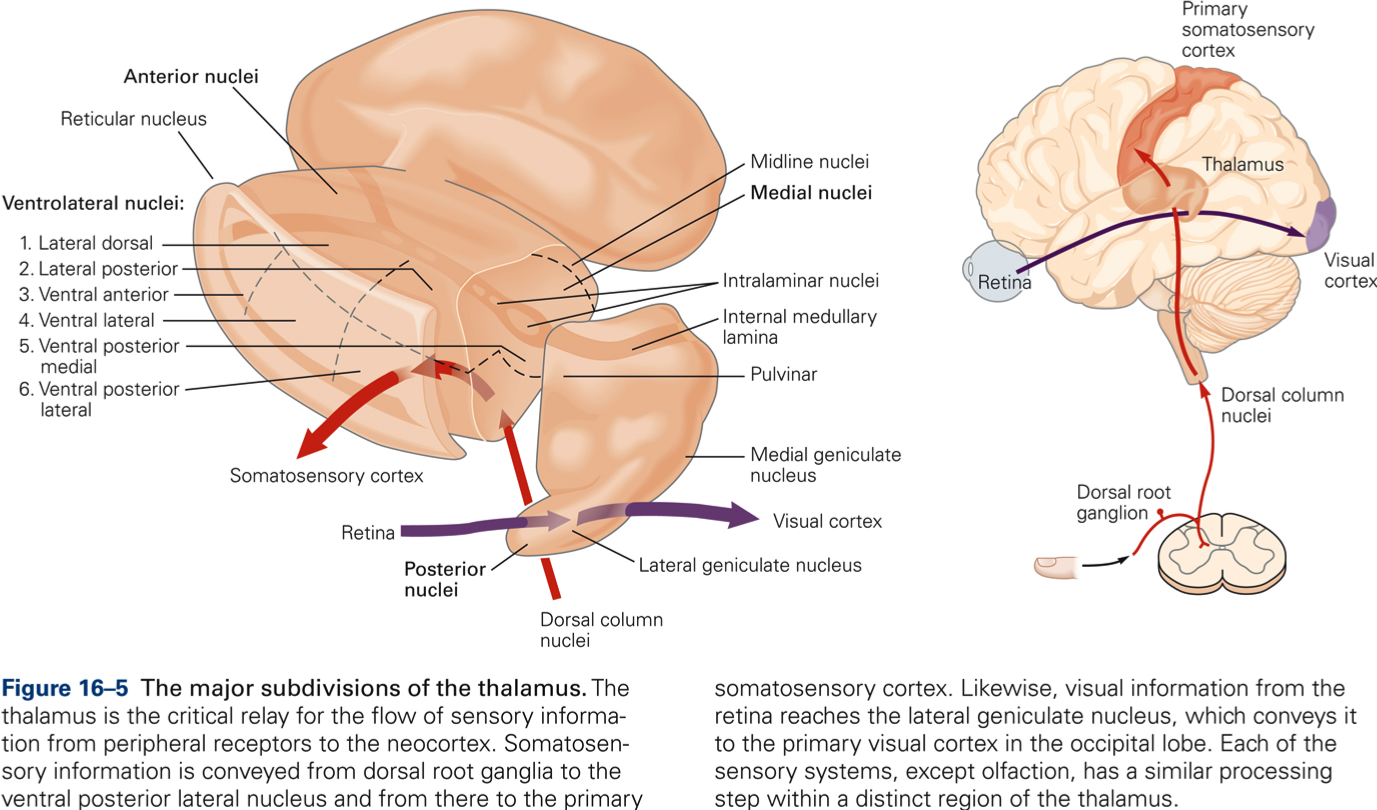
The thalamus contains three major subdivisions: anterior, medial and lateral. Based on cytoarchitectonics (cell size, shape, density), each of these subdivisions is divided into specific thalamic nuclei. The various nuclei also differ in function. Each receives input from different pathways. For example, somatosensory information terminates in VPL (limbs) and VPM (face). Inputs from cerebellum and basal ganglia terminate in largely separate regions; inputs from basal ganglia more anterior (VA), inputs from cerebellum more posterior (VL). Visual information terminates in the lateral geniculate nucleus and the pulvinar, auditory pathways terminate in the medial geniculate nucleus. The different thalamic nuclei project to specific cerebral cortical regions.
General organization of cerebral cortex
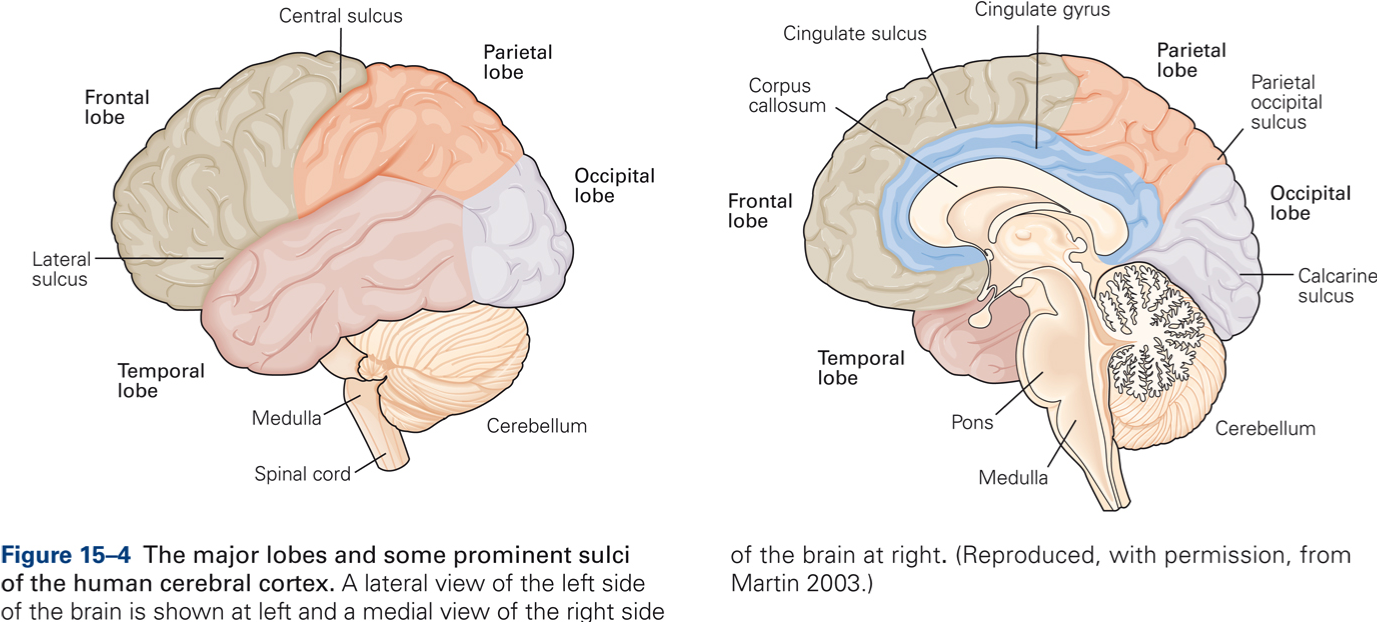
- Cerebrum consists of right and left hemispheres.
- Each hemisphere is divided into four lobes: frontal, parietal, temporal, and occipital lobe.
Brodmann’s areas
Each cerebral cortical region is further subdivided into smaller areas based on cytoarchitectonics. These are called Brodmann areas. In many cases these areas also differ in function. For example, area 4 corresponds to primary motor cortex, area 17 corresponds to primary visual cortex, etc.
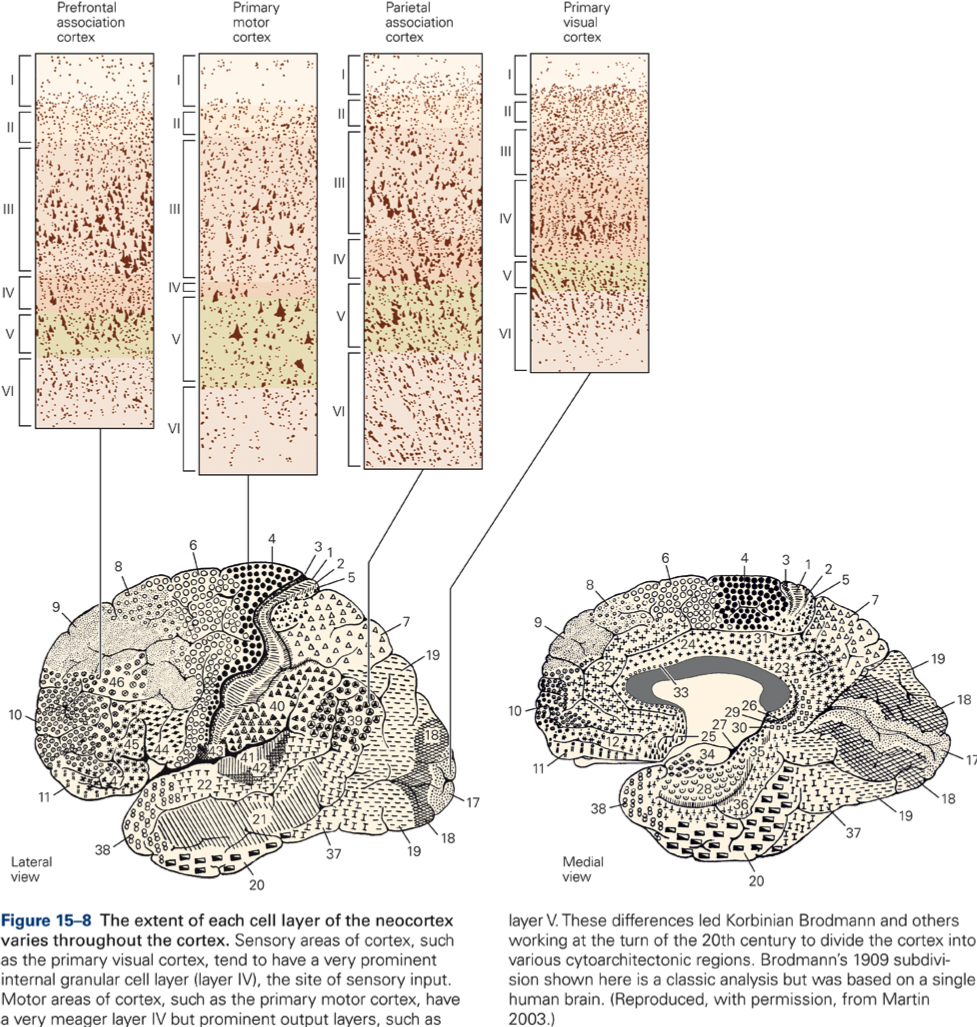
Cortical layers
Cerebral cortex consists of 6 layers.
- Layer 1: cell sparse layer, contains mostly dendrites of cells in deeper layers
- Layers 2 and 4: receive inputs. Especially layer 4 receives input from brainstem and spinal cord (via thalamus).
- Layers 3 and 5: output layers contain pyramidal cells. Layer 5 predominantly projects to brainstem and spinal cord; layer 3 projects mainly to other cerebral cortical areas (association or commissural fibers).
- Layer 6: provides feedback connections to thalamus.
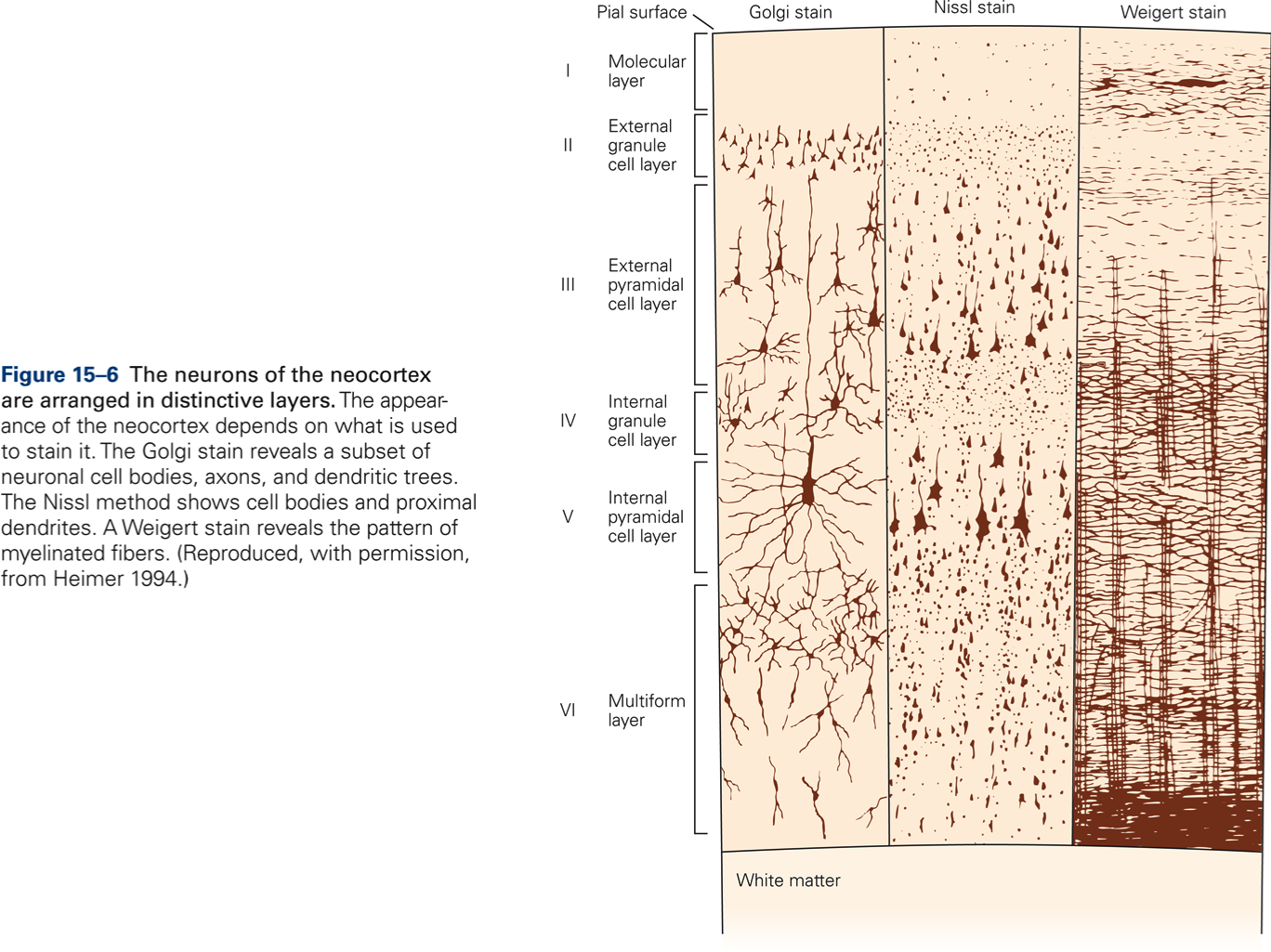
Cerebral cortical motor areas
- Primary motor cortex = area 4 = MI = precentral motor cortex.
- Supplementary motor area (SMA) = medial area 6 = MII = secondary motor cortex.
- Premotor cortex (PM) = lateral area 6 = premotor area.
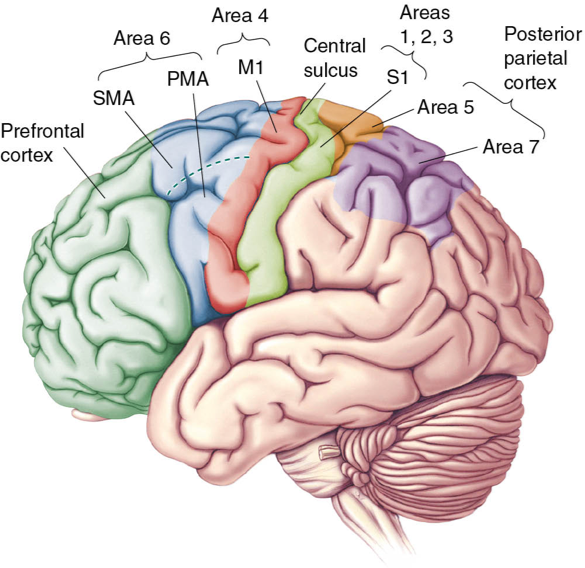
Key Takeaways
- Different regions within the thalamus receive sensory and motor information from different sources, including spinal cord, cerebellum, and basal ganglia.
- Different thalamic nuclei project to (and receive input from) specific cerebral cortical regions.
- Cerebral cortical regions are further subdivided into smaller, Brodmann areas based on cytoarchitectonics (i.e. cell size, cell density, thickness of cortical layers, etc.).
- In many cases, Brodmann areas also differ in function.

